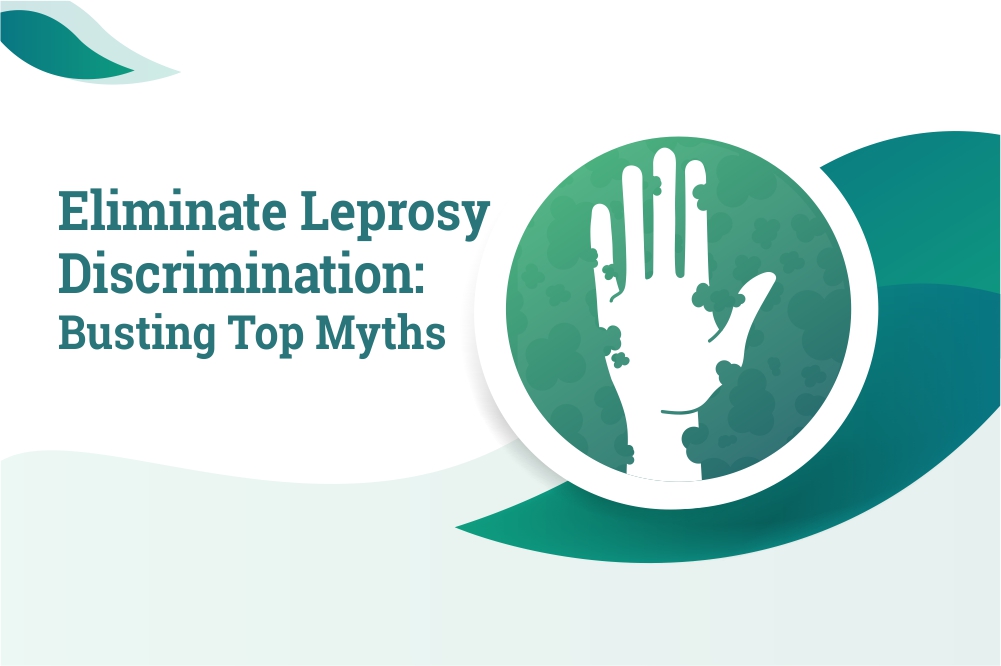

Life in Greyscale: Fighting Leprosy Discrimination
30th Jan, 2021
Even today, more than 20 countries still have laws in place, which discriminate against persons affected by the disease Leprosy, according to Alice Cruz, the UN independent expert against Leprosy discrimination. In countries like India and Bangladesh, people are subjected to discrimination and social exclusion simply because they are, or have previously been, affected by Leprosy. In India, there are still 17 laws that discriminate against people with this disease.
What is Leprosy?
Leprosy also known as the Hansen’s disease after Norwegian scientist Gerhard Henrik Armauer Hansen, who in 1873 discovered the slow-growing bacterium now known as Mycobacterium leprae as the cause of the illness. The bacillus reproduces very slowly and the average period of incubation and appearance of the signs and symptoms of the disease is approximately five years.
The disease mainly affects the skin, the nerves, the mucosa of the upper respiratory tract and the eyes. Leprosy is not highly infectious and is difficult to catch. It can take many years to develop symptoms of the disease following an infection. For, people who catch the disease, Leprosy can be cured with antibiotics.
People affected by Leprosy are often discriminated against and stigmatized. This situation has a negative impact on access to diagnosis, the result of treatment and the result of care, in addition to violating civil, political and social rights. Ending Leprosy discrimination, stigma and prejudice is essential to end the disease. To increase public awareness about Leprosy, World Leprosy Day is observed internationally in January every year.
Leprosy Myth Busters
Some common misconceptions about Leprosy continue to cause confusion and fuel stigma and discrimination. Here are some myths and facts about the disease.
Leprosy is the result of a sin or curse.
Leprosy is caused by the slow-growing bacterium Mycobacterium leprae and is not the result of one’s behavior or a curse.
People who have Leprosy need to live in special houses isolated from healthy people.
People with Leprosy who are being treated with antibiotics can live a normal life among their family and friends and can continue to attend work or school.
You can get Leprosy when sitting next to someone who has the disease.
Leprosy cannot be transmitted through casual contact such as shaking hands, sitting next to or talking to someone who has the disease. 95% of adults cannot catch it because their immune system can fight off the bacteria that causes Leprosy.
Leprosy causes the fingers and toes to fall off.
Leprosy does not cause digits to fall off. Mycobacterium leprae may make digits numb as a result burns and cuts on numb parts may go unnoticed, which may lead to infection and permanent damage, and eventually the body may reabsorb the digit. This happens in advanced stages of untreated disease.
End the Leprosy Stigma
“In India, World Leprosy Day is celebrated on 30th January to coincide with the anniversary of the death of Mahatma Gandhi, who passed away on that day in 1948. Gandhi worked tirelessly to help those affected with the disease. Everyday nearly 600 more people are diagnosed with and start treatment for Leprosy, while millions more go undiagnosed. Today it is not just the disease that is forgotten, but the people too”, shares Dr. Santoshdev Rathod, member, IADVL SIG Leprosy.
“Do your part in quelling the myths and ending the stigma. Learn more about the disease and share with friends and family that Leprosy is a curable illness. Remember, educating yourself and others about Leprosy helps depict a positive image of Leprosy and increase awareness about it. Promoting a positive image of Leprosy helps focus on the abilities of the affected individuals rather than disability. Let’s end the stigma and beat Leprosy together!”, Dr Rathod adds.


